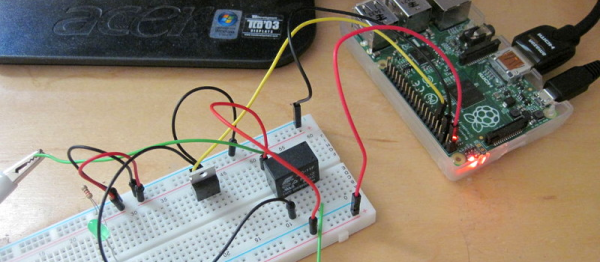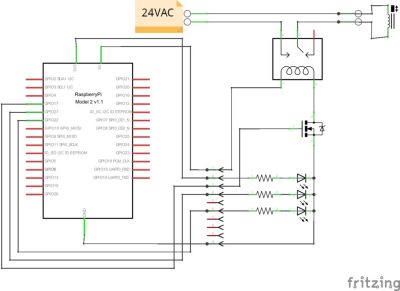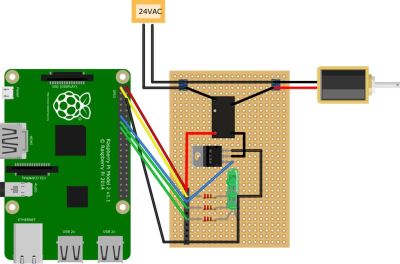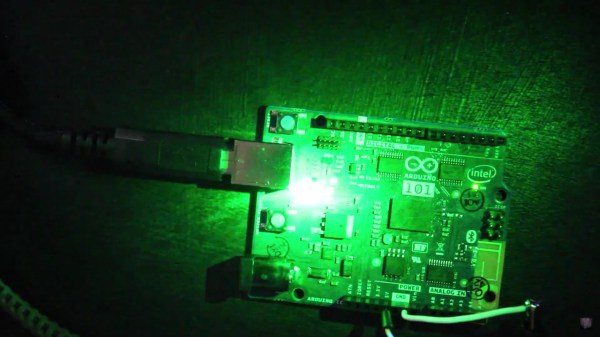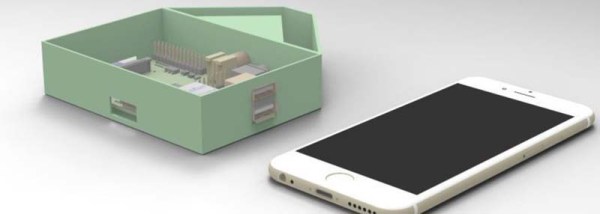A good first step in a project is knowing what you want to do. [Ben Fino] made it clear that his Raspberry Pi Sprinkler control system for his wife’s garden had one goal: keep the plants alive. The resulting project is doing just that and no more.
The circuitry, and plumbing, is straightforward and explained well in the Instructable. All the electronics consists of is the Pi and a MOSFET to take the 3.3v GPIO to 5v to control a relay. The valve controlling the water requires 28v AC which necessitated the relay to control it. There are also three LEDs: one is for power, one to indicate when the valve is opened, and one is an extra for some future purpose.
The intriguing part is the use of weather data from the web to determine if it’s rained recently. Python scripts provided by [Ben’s] friend [Mark Veillette] use a weather site API to get the rainfall data. The main script is set to run once every 24 hours. [Ben] set his system to water unless the previous day had sufficient rain. How much rain and the number of look-back days is programmable.
What a great application of the KISS principle: keep it simple, stupid – except for that third LED without a purpose.

